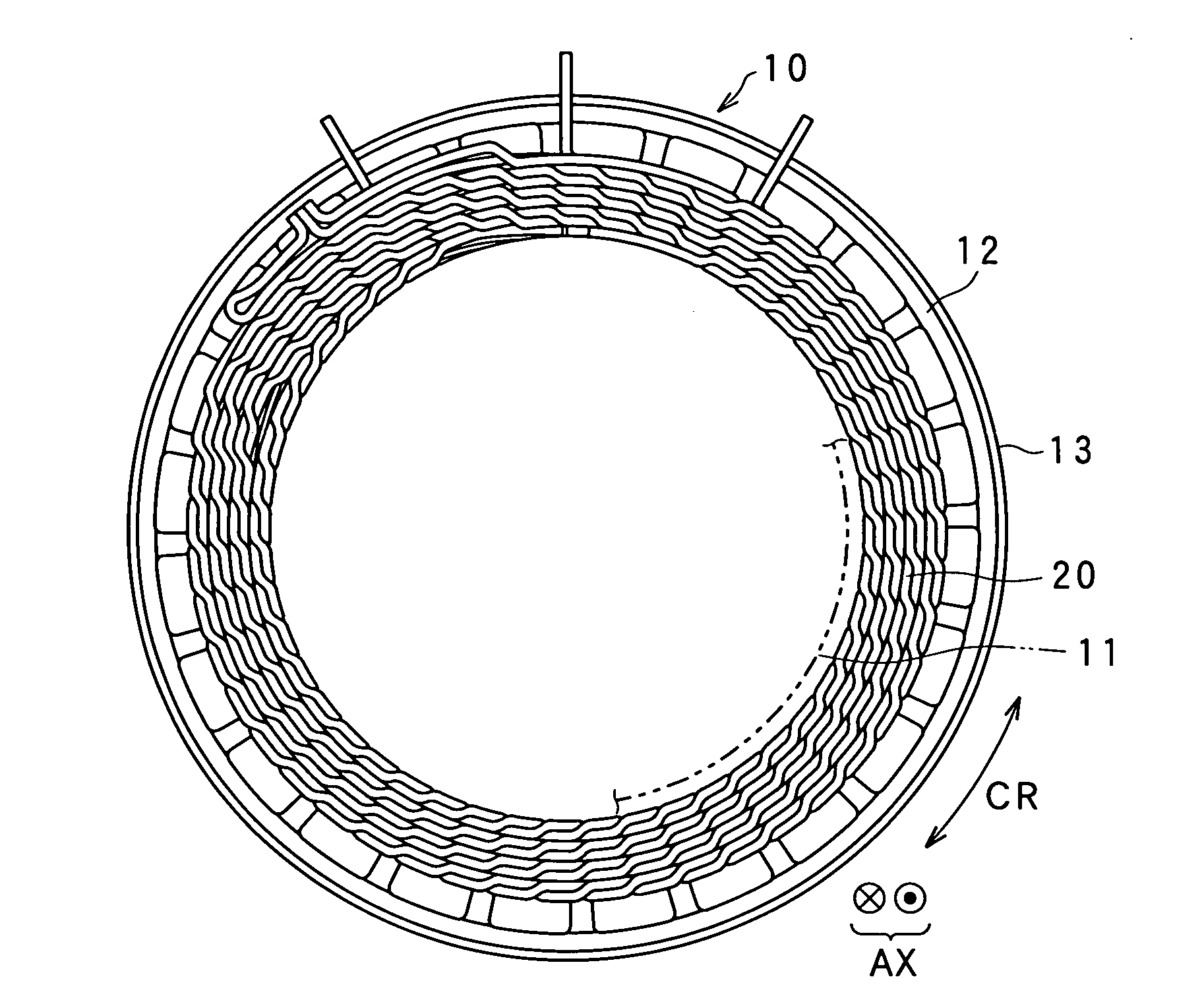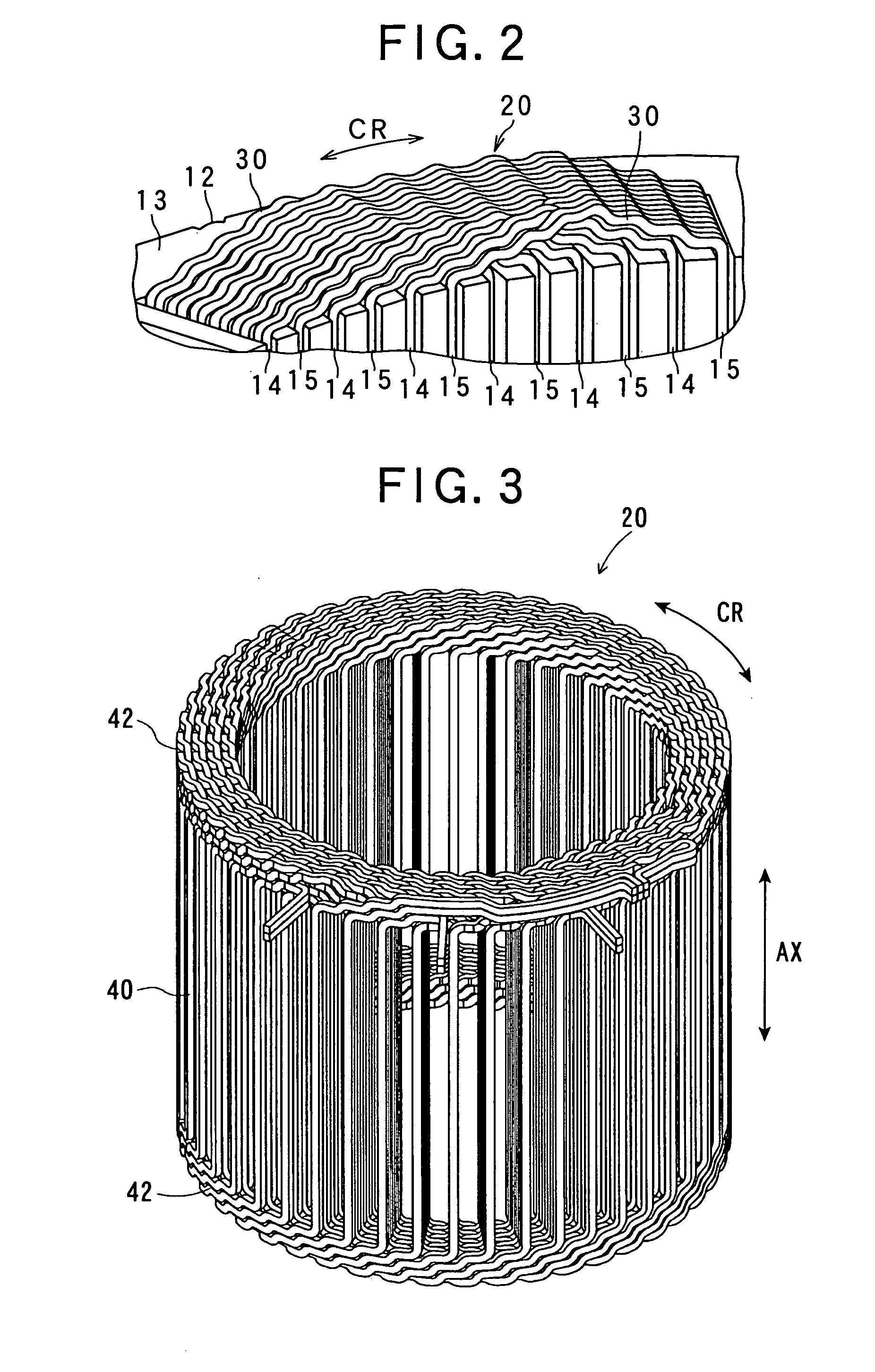Method of manufacturing coil assembly unit for rotary electric machine
- Summary
- Abstract
- Description
- Claims
- Application Information
AI Technical Summary
Benefits of technology
Problems solved by technology
Method used
Image
Examples
Embodiment Construction
[0035]With reference to the accompanying drawings, embodiments of the present invention will now be described, in which how to manufacture a coil assembly for a rotary electric machine, according to the present invention, will now be described.
[0036]FIGS. 1A and 1B outline a rotor 10 for the rotary electric machine which is for example an alternator, a motor, or a motor generator for a vehicle. FIG. 1A shows a perspective view of the rotor 10, while FIG. 1B shows a side view of the rotor 10. This rotor 10 is manufactured with a coil assembly 20, which can be assembled based on various manufacturing methods provided various embodiments of the present invention.
[0037]The stator 10 shown in FIGS. 1A and 1B is used by, for example, a rotary electric machine called a motor generator for a vehicle, which works as an electric motor as well as a generator. The stator 10 has a bore in which a stator 11 is accommodated. Though not detailed, the rotor 11 has a plurality of magnetic poles of wh...
PUM
| Property | Measurement | Unit |
|---|---|---|
| Angle | aaaaa | aaaaa |
| Width | aaaaa | aaaaa |
Abstract
Description
Claims
Application Information
 Login to View More
Login to View More - R&D
- Intellectual Property
- Life Sciences
- Materials
- Tech Scout
- Unparalleled Data Quality
- Higher Quality Content
- 60% Fewer Hallucinations
Browse by: Latest US Patents, China's latest patents, Technical Efficacy Thesaurus, Application Domain, Technology Topic, Popular Technical Reports.
© 2025 PatSnap. All rights reserved.Legal|Privacy policy|Modern Slavery Act Transparency Statement|Sitemap|About US| Contact US: help@patsnap.com



